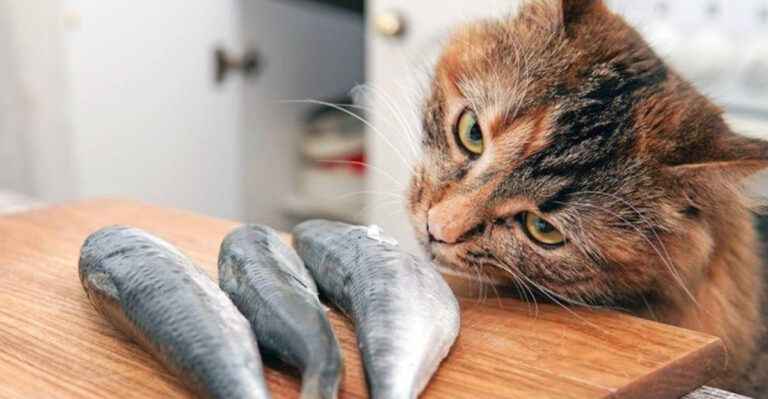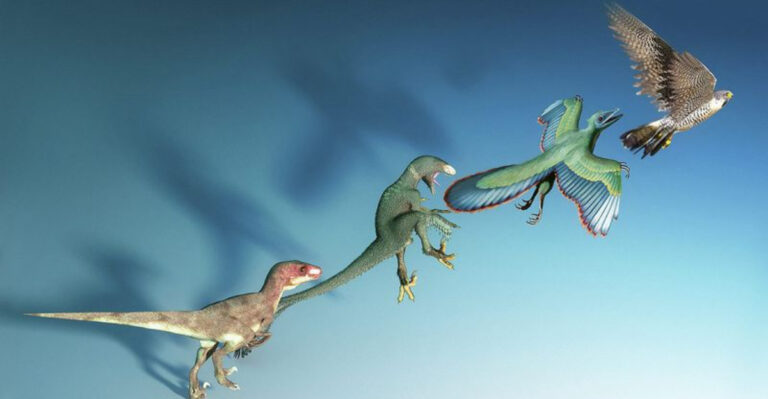How One Tooth From Iguanodon Changed The Understanding Of Dinosaurs
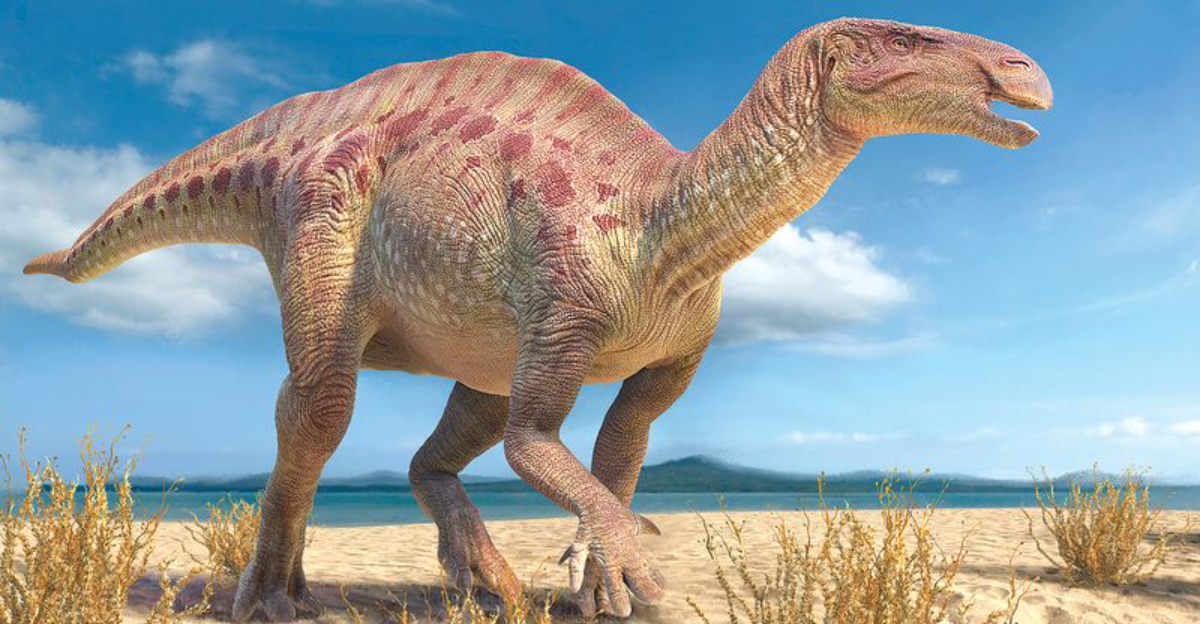
Back in 1822, a strange tooth found in England would forever change how we think about ancient creatures.
This single fossil sparked a scientific revolution that gave birth to the study of dinosaurs as we know it today.
Before this discovery, people had no idea that giant reptiles once ruled our planet millions of years ago.
The Discovery Of Iguanodon’s Tooth: A Key Moment In Paleontology
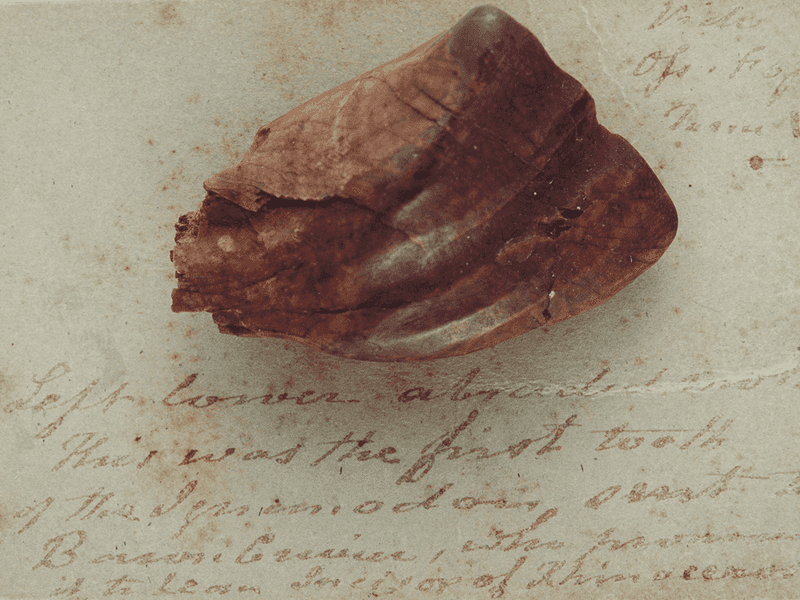
Mary Ann Mantell spotted something unusual while walking along a country road in Sussex, England in 1822. The shiny object caught her eye among the gravel – a fossilized tooth unlike anything seen before.
Her husband Gideon, a doctor with a passion for fossils, recognized it as something extraordinary. He compared it with modern reptile teeth and noticed striking similarities to iguana teeth, only much larger.
This chance discovery would become the second dinosaur ever scientifically described. The tooth, weathered by time yet perfectly preserved, opened a window into a world 125 million years old.
How A Simple Tooth Changed Everything
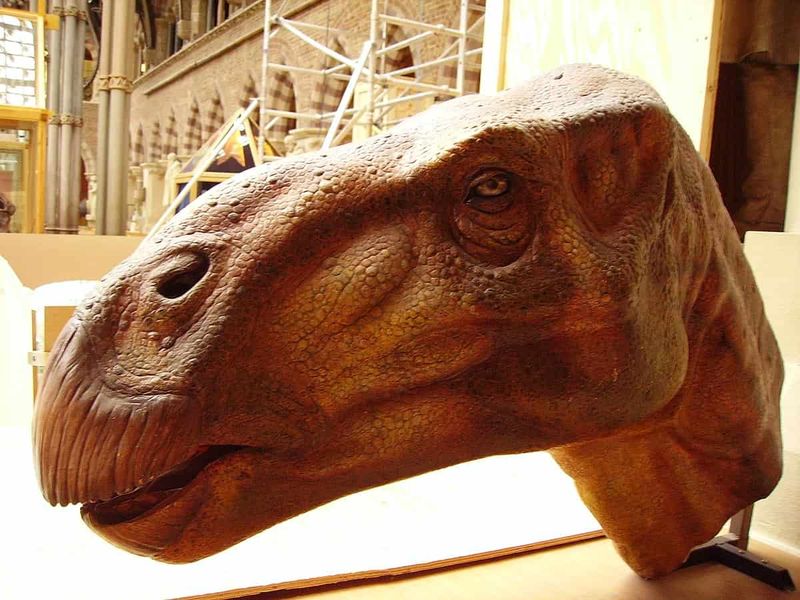
Before this tooth appeared, most scientists believed Earth was only a few thousand years old. Finding a creature that clearly didn’t exist anymore challenged this thinking completely.
The tooth’s size suggested an animal of massive proportions – approximately 30 feet long! Nobody had imagined reptiles could grow so enormous or that extinct animals could be so different from modern ones.
Scientists had to rethink Earth’s timeline, stretching it from thousands to millions of years. This single fossil fragment forced a complete reconsideration of life’s history, suggesting a mysterious era when strange reptiles dominated the landscape.
Gideon Mantell’s Search For Answers About Iguanodon
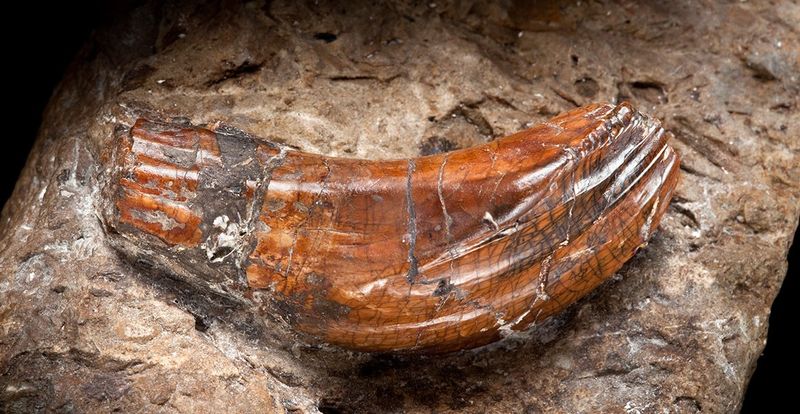
Gideon Mantell became obsessed with understanding the creature behind the mysterious tooth. He traveled across England collecting more fossils and spent his savings building a personal museum.
His breakthrough came while visiting the Royal College of Surgeons. Looking at iguana specimens, Mantell noticed the uncanny resemblance between their teeth and his fossil – except his was twenty times larger!
Mantell faced ridicule from the scientific establishment led by Richard Owen, who dismissed his findings. Yet he persisted, eventually gathering enough bones to prove this ancient reptile was real and unlike anything alive today.
The Moment Iguanodon Was Given Its Name
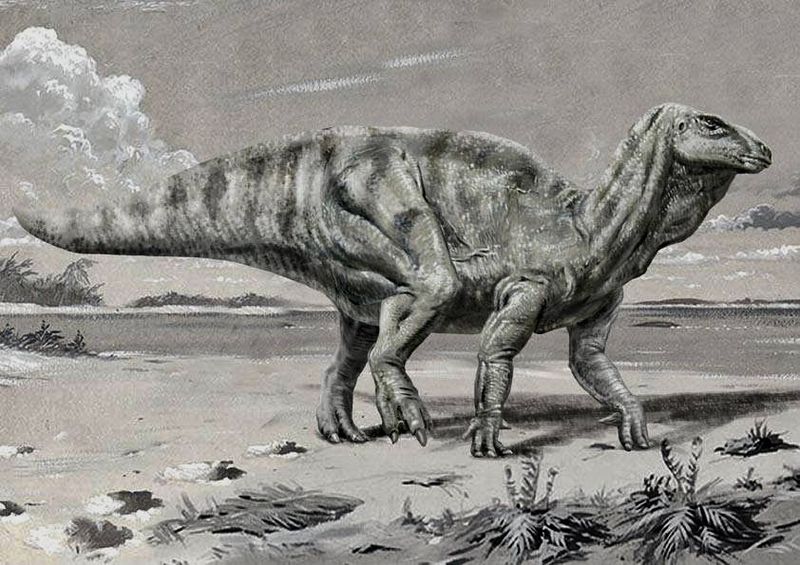
Naming this creature proved challenging for Mantell. After consulting with William Conybeare, a leading geologist, he combined two Greek words: ‘iguana’ and ‘odontos’ (tooth) to create ‘Iguanodon’ – meaning ‘iguana tooth.’
The scientific community buzzed with excitement when Mantell published his findings in 1825. His paper described the first plant-eating fossil reptile ever identified, breaking the assumption that all reptiles were carnivores.
The name itself represented a scientific turning point – acknowledging both the similarity to modern animals while recognizing this was something entirely new. Iguanodon became just the second dinosaur ever named, after Megalosaurus.
How Iguanodon Challenged Old Beliefs About Dinosaurs
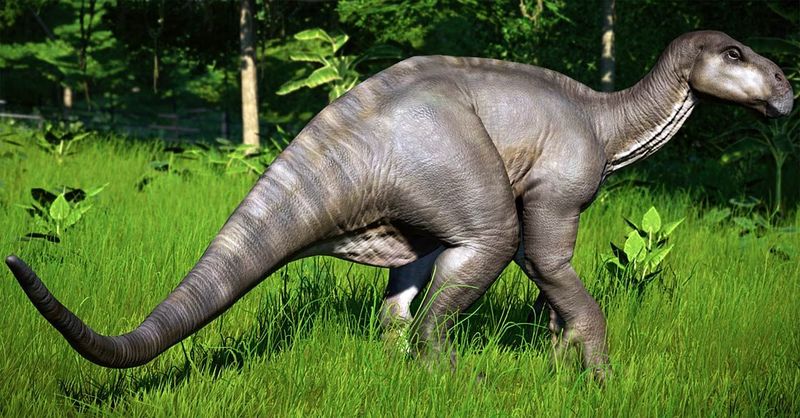
Iguanodon shattered the image of dinosaurs as simply big lizards. Its teeth revealed something revolutionary – it was a plant-eater, not a fearsome predator like scientists assumed all giant reptiles must be.
The distinctive wear patterns on the tooth showed it chewed tough vegetation, suggesting a complex ecosystem of different dinosaur types. Scientists realized dinosaurs weren’t just scaled-up modern reptiles but diverse creatures with specialized adaptations.
Most shocking was the evidence that Iguanodon walked upright on two legs! This contradicted the initial view of dinosaurs as belly-dragging lizards and hinted at warm-blooded, active lifestyles completely different from modern reptiles.
Iguanodon And The Birth Of Dinosaur Study
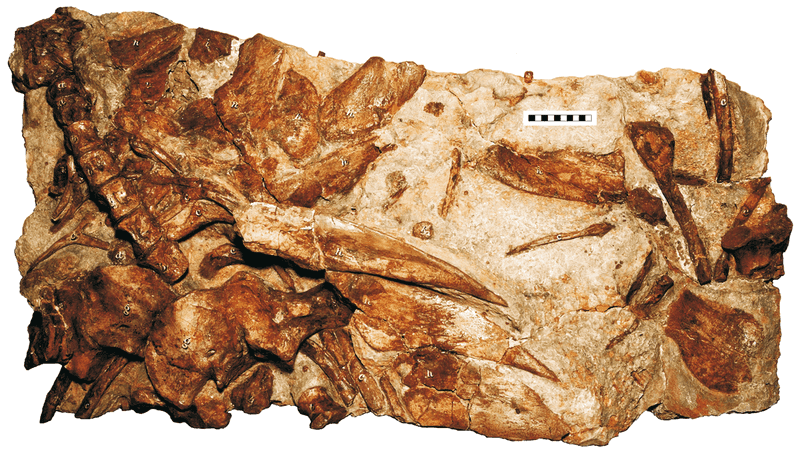
That single tooth sparked the scientific field we now call paleontology. In 1842, Richard Owen (despite earlier criticizing Mantell) created the term “Dinosauria” partly based on Iguanodon’s distinctive features.
Museums began actively hunting dinosaur fossils after seeing public fascination with Mantell’s discoveries. The first dinosaur-focused scientific societies formed, dedicated to understanding these mysterious ancient creatures.
Iguanodon became the centerpiece of early dinosaur research. Its fossils were among the most complete, allowing scientists to make better guesses about dinosaur biology than ever before. This one creature essentially launched dinosaur science as we know it today.
Bringing Iguanodon To Life: The Crystal Palace Dinosaurs
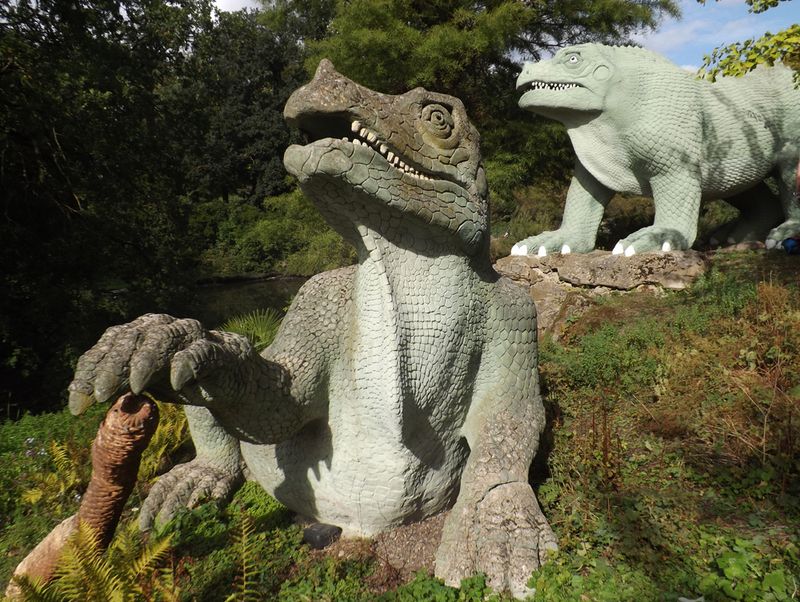
In 1854, the world got its first glimpse of what people thought dinosaurs looked like. Sculptor Benjamin Waterhouse Hawkins created life-sized Iguanodon models for Crystal Palace Park in London under Owen’s guidance.
These sculptures depicted Iguanodon as a heavy, four-legged creature with a horn on its nose (actually its thumb!). Though wildly inaccurate by today’s standards, they electrified Victorian society and made dinosaurs famous worldwide.
Hawkins even held a famous dinner party inside an unfinished Iguanodon model before it was completed. Twenty-one scientists and dignitaries ate and drank inside the creature’s body – the first “dinosaur dinner party” in history!
How Our Understanding Of Iguanodon Has Changed Over Time
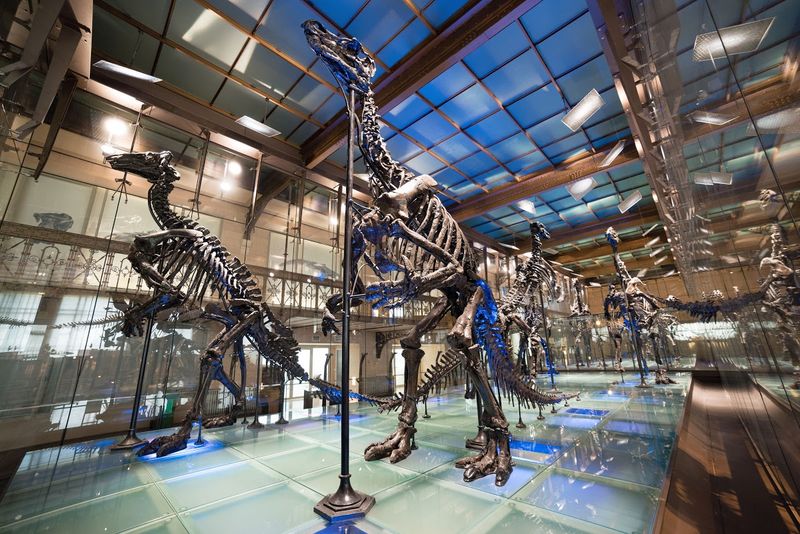
The original Iguanodon reconstruction looked nothing like what we know today. Early models showed a quadrupedal beast with a spike on its nose – actually a thumb spike misplaced by early paleontologists!
Everything changed in 1878 when miners in Belgium discovered a remarkable treasure: 31 complete Iguanodon skeletons. These perfectly preserved specimens revealed Iguanodon could walk on two legs and had a thumb spike for defense or gathering food.
Modern studies using computer modeling and biomechanics show Iguanodon likely moved on four legs when grazing but ran on two when threatened. Each new discovery has transformed our image of this dinosaur, teaching scientists to question their assumptions.
What Iguanodon’s Tooth Revealed About Its Role In The Ecosystem
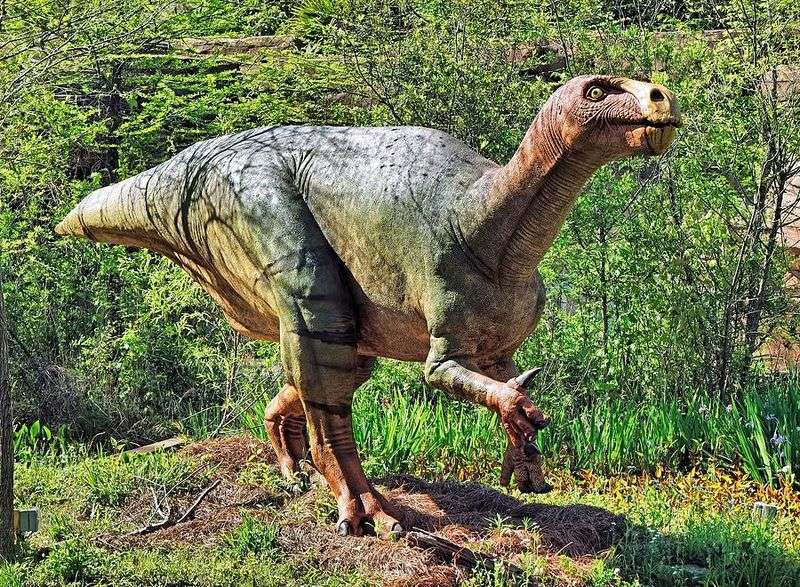
Iguanodon’s tooth design tells us it was nature’s lawnmower. The flat, ridged surface was perfect for grinding tough plant material that other animals couldn’t digest – similar to how cows eat today.
Scientists studying wear patterns discovered Iguanodon could replace its teeth throughout its lifetime. As one tooth wore down, another would grow in its place – a sophisticated adaptation for an animal that constantly wore down its teeth on fibrous plants.
As one of the most common dinosaurs of its time, Iguanodon was likely a keystone species. Its plant-eating habits would have shaped the landscape, controlling vegetation growth and serving as prey for large predators in a complex food web.
New Discoveries: What We’re Still Learning About Iguanodon
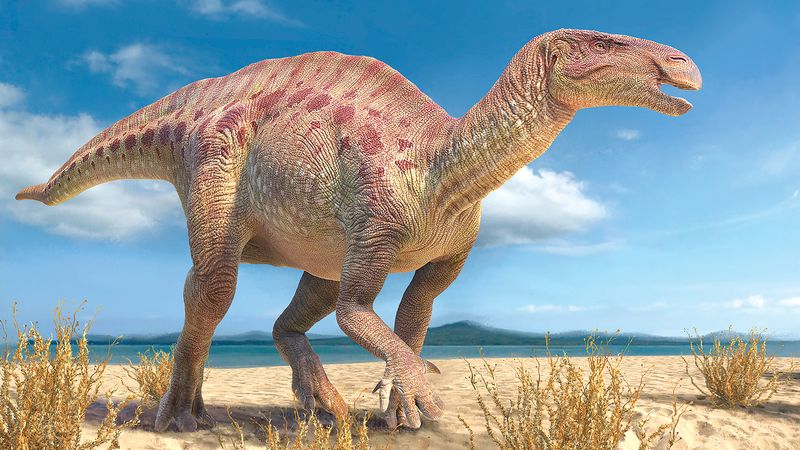
Modern technology reveals secrets that Mantell could never have imagined. CT scans of Iguanodon skulls show complex sinuses and nasal passages, suggesting these dinosaurs had keen senses of smell and possibly made trumpeting calls.
Fossil trackways discovered in England and Germany prove Iguanodons traveled in herds – sometimes with hundreds of individuals! These social dinosaurs likely migrated seasonally following food sources.
The original “Iguanodon” has now been split into multiple species. What Mantell discovered was actually Iguanodon bernissartensis, while many fossils once called Iguanodon now have new names like Mantellisaurus and Ouranosaurus. The legacy of that first tooth continues growing with each new finding.

